2018-2021 UNDERWATER WORLD by MDM Wholesale
Making its debut early in 2018, German producer MDM Wholesale launched its first Underwater World coin. A three ounce silver coin with an antique finish, it featured a heavily dished reverse face inside a border, which was filled with a translucent blue enamel. Struck to an impressive level of ultra-high relief, each coin depicts a sea creature not only under the enamel, but also bursting through the surface of it, just as the animal would in reality.
There have been four issues to date at the rate of two per year. A fish, a mammal, and two reptiles point to this being a wide-ranging look at the world under the sea. The use of the clear enamel means that the background field of the reverse face, filled with marine flora, is perfectly visible and helps place the subject in its habitat. The first coin depicted a Great White Shark and did so pretty well, but for us at least, the Sea Turtle coin is the one that lifted this series above others with a similar theme. The following Dolphin and Crocodile issues are decent entrants, but the Turtle remains the best liked here.
Even though the coin weighs in at 93.3 grams (3 troy ounces), the levels of high relief limit the diameter to 50 mm, but that’s certainly big enough to keep everything packed full of great detail. Antique-finished, these are fine examples of coins that, while they’ve undergone modification from their cleanly-struck origins, have done so in a clever and non-tacky way. Selling for around €250.00 on issue, they are limited to 999 examples of each.
2018 GREAT WHITE SHARK
One of the most impressive of living creatures, the Great White Shark is an apex predator found in the coastal surface waters of all the major oceans and has no natural predators other than the Orca (Killer Whale). Mainly known for its size, mature individuals have been recorded growing up to 6.4 m (21 ft) in length, although reports have been published of great white sharks measuring over 8 m (26 ft), and 3,324 kg (7,328 lb) in weight.
The shark reaches maturity around 15 years of age and was previously believed to have a life span of over 30 years. The true lifespan of great white sharks is far longer; now estimated to be as long as 70 years or more, making it one of the longest lived cartilaginous fish currently known. Great white sharks can accelerate to speeds that exceed 56 km/h (35 mph).
2018 SEA TURTLE
Sea turtles are fascinating and ancient creatures that have roamed the Earth’s oceans for millions of years, making them among the oldest living reptiles on the planet. These magnificent marine reptiles are known for their distinctive, streamlined bodies and, of course, their iconic shells. Sea turtles play a vital role in maintaining the health of marine ecosystems, primarily by controlling jellyfish populations, and aiding in nutrient cycling as their eggs and hatchlings provide sustenance for various predators.
There are seven recognized species of sea turtles, each with its own unique characteristics and habitats. These species include the loggerhead, leatherback, green, hawksbill, olive ridley, Kemp’s ridley, and flatback. Sea turtles are known for their remarkable migratory abilities, with some individuals travelling thousands of miles between their nesting and foraging grounds.
Unfortunately, sea turtles face numerous threats today, including habitat destruction, pollution, climate change, and poaching. Conservation efforts are crucial to protecting these ancient mariners, and many organizations and governments are working tirelessly to ensure their survival. Efforts include habitat preservation, nest protection, and public awareness campaigns to promote responsible practices that safeguard these incredible creatures for generations to come.
2019 DOLPHIN
The common bottlenose dolphin (Tursiops truncatus) is the most well-known species from the family Delphinidae, and the largest species of the beaked dolphins. They inhabit temperate and tropical oceans throughout the world, and are absent only from polar waters.
The dolphin is grey in colour, and may be between 2-4 m long, and weigh between 150 and 650 kg. Males are generally larger and heavier than females. They can live as long as 40–50 years. Sexual maturity varies by population, and ranges from 5 to 14 years of age. Dolphins have a short and well-defined snout that looks like an old-fashioned gin bottle, which is the source for their common name. Their necks are more flexible than other dolphins’ due to five of their seven vertebrae not being fused together as is seen in other dolphin species.
Common bottlenose dolphins live in groups called pods that typically number about 15 individuals, but group size varies from pairs of dolphins to over 100 or even occasionally over 1000 animals for short periods of time. Their diets consist mainly of eels, squid, shrimp and wide variety of fishes, which they do not chew, instead swallowing it whole. Dolphin groups often work as a team to harvest schools of fish, though they also hunt individually. Dolphins search for prey primarily using echolocation, which is a form of sonar. They emit clicking sounds and listen for the return echoes to determine the location and shape of nearby items, including potential prey. Dolphins also use sound for communication, including squeaks emitted from the blowhole, whistles emitted from nasal sacs below the blowhole, and sounds emitted through body language, such as leaping from the water and slapping their tails on the water.
The deepest dive ever recorded for a bottlenose dolphin was 300 meters. This was accomplished by Tuffy, a dolphin trained by the US Navy. Nellie, the longest-lived Atlantic bottlenose dolphin in human care, died at age 61 on April 30, 2014. Nellie was born on Feb, 27, 1953 at Marineland.
2019 CROCODILE
The Saltwater Crocodile (Crocodylus porosus), also known as saltie, estuarine or Indo-Pacific crocodile, is the largest of all living reptiles, as well as the largest terrestrial and riparian predator in the world. The males of this species can reach sizes of up to 6.7 m and weigh as much as 2,000 kg. However, an adult male saltwater crocodile is generally between 4.3 and 5.2 m in length and weighs 400–1,000 kg, rarely growing larger. Females are much smaller and often do not surpass 3 m. As its name implies, this crocodile can live in salt water, but usually resides in mangrove swamps, estuaries, deltas, lagoons, and lower stretches of rivers. They have the broadest distribution of any modern crocodile, ranging from the eastern coast of India, throughout most of Southeast Asia, stretching south to northern Australia, and historically ranging as far west as just beyond the eastern coast of Africa and as far east as waters off the coast of Japan.
The saltwater crocodile is a formidable and opportunistic hypercarnivorous “apex” ambush predator capable of taking almost any animal that enters its territory, including fish, crustaceans, reptiles, birds and mammals, including other predators. Due to their size and distribution, saltwater crocodiles are the most dangerous extant crocodilian to humans.
2020 SPOTTED SEAL
The spotted seal (Phoca largha), is a member of the family Phocidae, and considered a “true seal”. It inhabits ice floes and waters of the north Pacific Ocean and adjacent seas. It is sometimes mistaken for the Harbour seal, to which it is closely related and spotted seals and Harbour seals often mingle together in areas where their habitats overlap.
The reduction in arctic ice floes due to global warming led to concerns that the spotted seal was threatened with extinction. Studies were conducted on its population numbers, with the conclusion, as of October 15, 2009, that the spotted seal population in Alaskan waters is not currently to be listed as endangered by NOAA.
Spotted seals dive to depths up to 1,000 ft (300 m) while feeding on a variety of ocean prey. Juveniles eat primarily krill and small crustaceans while adults eat a variety of fish including herring, arctic cod, Pollock, and Capelin. They do not seem to vocalize a lot, although not much is known about their vocalizations. They appear to vocalize more while in moulting groups. When approached in these groups, they make various sounds such as growls, barks, moans, and roars.
Based on satellite tracking conducted on Yellow Sea population, it was revealed that seals migrate more than 3,300 km.
2020 BLUE WHALE
The blue whale (Balaenoptera musculus) is a marine mammal reaching a maximum confirmed length of 29.9 meters and weight of 173 tonnes and is the largest animal known to have ever existed. The blue whale’s long and slender body can be various shades of grayish-blue dorsally and somewhat lighter underneath The five recognised subspecies are distributed in all major ocean basins, except the Bering Sea and the Arctic Ocean, although blue whales have been sighted near the ice edge in the North Atlantic.
Their diet consists almost exclusively of krill. Blue whales feed on krill at the surface and at depths greater than 100 m, following their prey’s vertical migration through the water column. Blue whales capture krill through lunge feeding, a bulk filter-feeding strategy that involves accelerating toward a prey patch at high speeds, opening the mouth 80–90°, and inverting the tongue, creating a large sac. This allows them to engulf a large volume of krill-laden water, up to 220 tons of water at one time. The water is then squeezed out through their baleen plates with pressure from the ventral pouch and tongue, and the remaining krill are swallowed. The greatest dive depth reported from tagged blue whales was 315 meters. Their theoretical aerobic dive limit was estimated at 31.2 min, however, the longest dive duration measured was 15.2 minutes.
2021 OCTOPUS
The octopus is a soft-bodied, eight-limbed mollusc of the order Octopoda . Around 300 species are recognised, and the order is grouped within the class Cephalopoda with squids, cuttlefish, and nautiloids. Like other cephalopods, the octopus is bilaterally symmetric with two eyes and a beak, with its mouth at the centre point of the eight limbs. The soft body can rapidly alter its shape, enabling them to squeeze through small gaps. They trail their eight appendages behind them as they swim. The siphon is used both for respiration and for locomotion, by expelling a jet of water. Octopuses have a complex nervous system and excellent sight, and are among the most intelligent and behaviourally diverse of all invertebrates.
Octopuses inhabit various regions of the ocean, including coral reefs, pelagic waters, and the seabed; some live in the intertidal zone and others at abyssal depths. Most species grow quickly, mature early, and are short-lived. In most species, the male uses a specially adapted arm to deliver a bundle of sperm directly into the female’s mantle cavity, after which he becomes senescent and dies, while the female deposits fertilised eggs in a den and cares for them until they hatch, after which she also dies.
Strategies to defend themselves against predators include the expulsion of ink, the use of camouflage and threat displays, the ability to jet quickly through the water and hide, and even deceit. All octopuses are venomous, but only the blue-ringed octopuses are known to be deadly to us.
COMMON OBVERSE
The centre of the obverse is occupied by the modern coat of arms of Barbados, as adopted by royal warrant of Queen Elizabeth II on 14 February 1966. The coat of arms has a helmet with a national symbol on top, and a shield beneath that is supported by two animals – something common to former British possessions in the Caribbean. The arms were designed by Neville Connell, for many years curator of the Barbados Museum, with artistic assistance by Hilda Ince.
The national symbol found on top of the helmet for Barbados is the fist of a Barbadian holding two stalks of sugar cane, that are crossed to resemble St. Andrew’s Cross. This is representative of the importance of the sugar industry as well as Barbados celebrating its national independence day on St. Andrew’s Day. The shield is gold in colour. Upon it are a pair of the national flower, known as the Pride of Barbados, and a single bearded fig tree (Ficus citrifolia). The shield is supported by a dolphin fish and a pelican. They stand for the fishing industry and Pelican Island, respectively. At the bottom is Barbados’ national motto (“Pride and Industry”) on a scroll.
Surrounding the coat of arms is a wide ring filled with marine wildlife, something generic rather than future subjects for the series. Surrounding that and adjoining the coin edge is another border holding the title and composition inscriptions. All told, an attractive piece and well themed for the subject matter.
PACKAGING
Decent, but unadventurous sums up the presentation. A nice quality wooden box inside a blue shipper does the job, but without any particular flair. A certificate of authenticity is enclosed and it appears to be customised for each issue. This could well be a series that would benefit from a collectors box to hold them all, but with no set issue limit in place at present, we guess that would be hard to do effectively. A large Nimbus frame would be a good alternative if you want to get something together yourself, as this is clearly a series that would display well.
SPECIFICATION
| DENOMINATION | $5 Barbados |
| COMPOSITION | 0.999 silver |
| WEIGHT | 93.3 grams |
| DIMENSIONS | 50.0 mm |
| FINISH | Antique |
| MODIFICATIONS | Extra High-relief, blue resin |
| MINTAGE | 999 |
| BOX / C.O.A. | Yes / Yes |




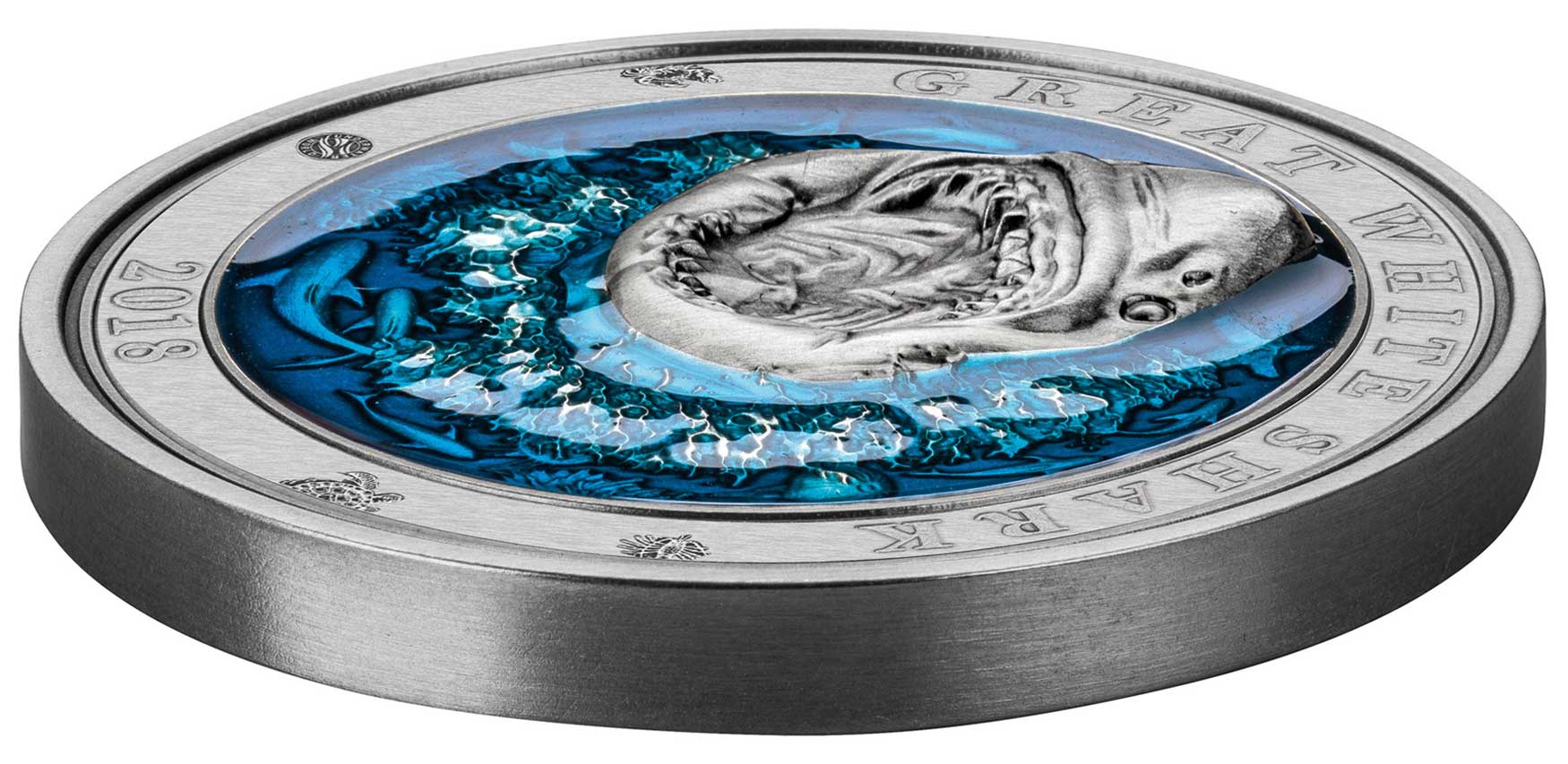


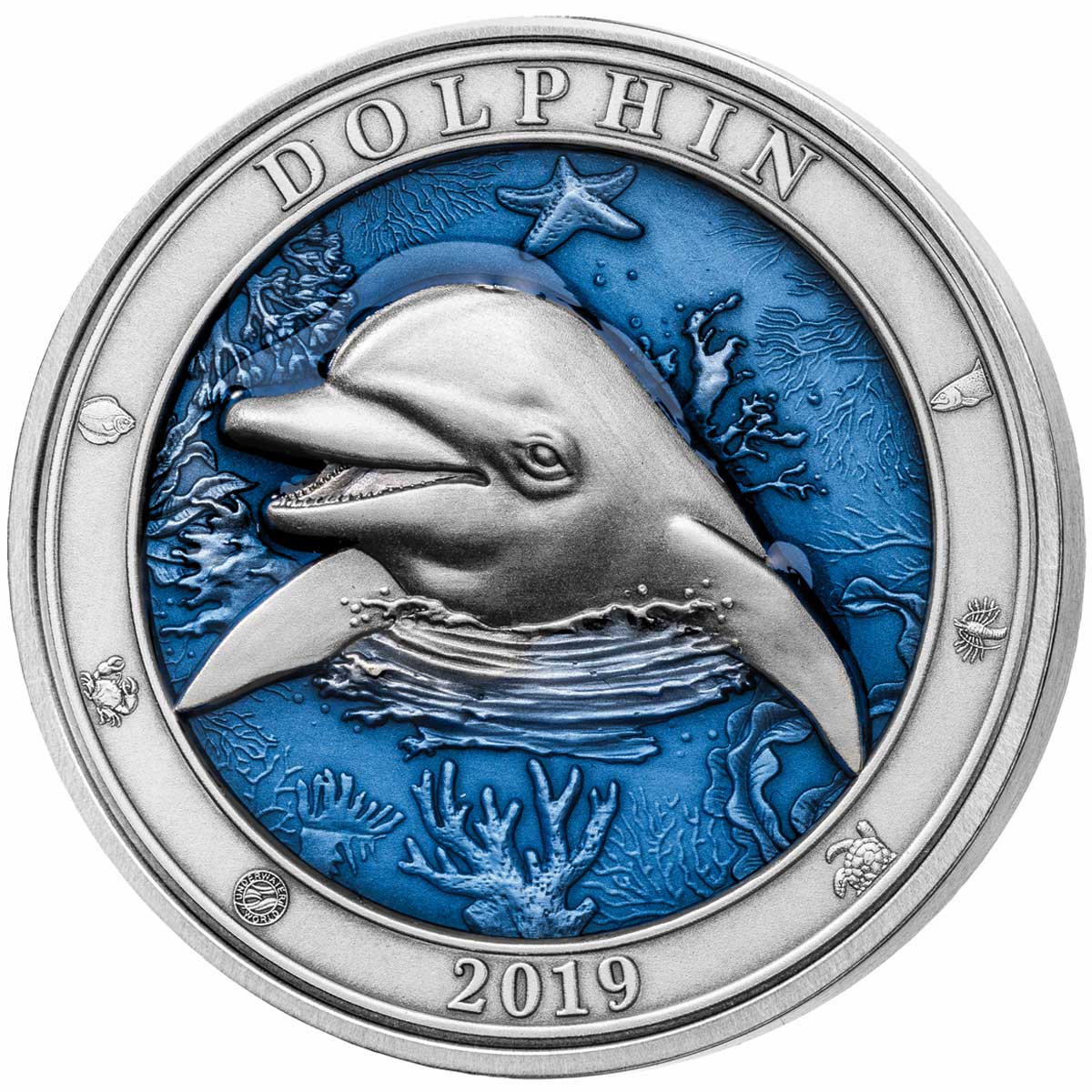

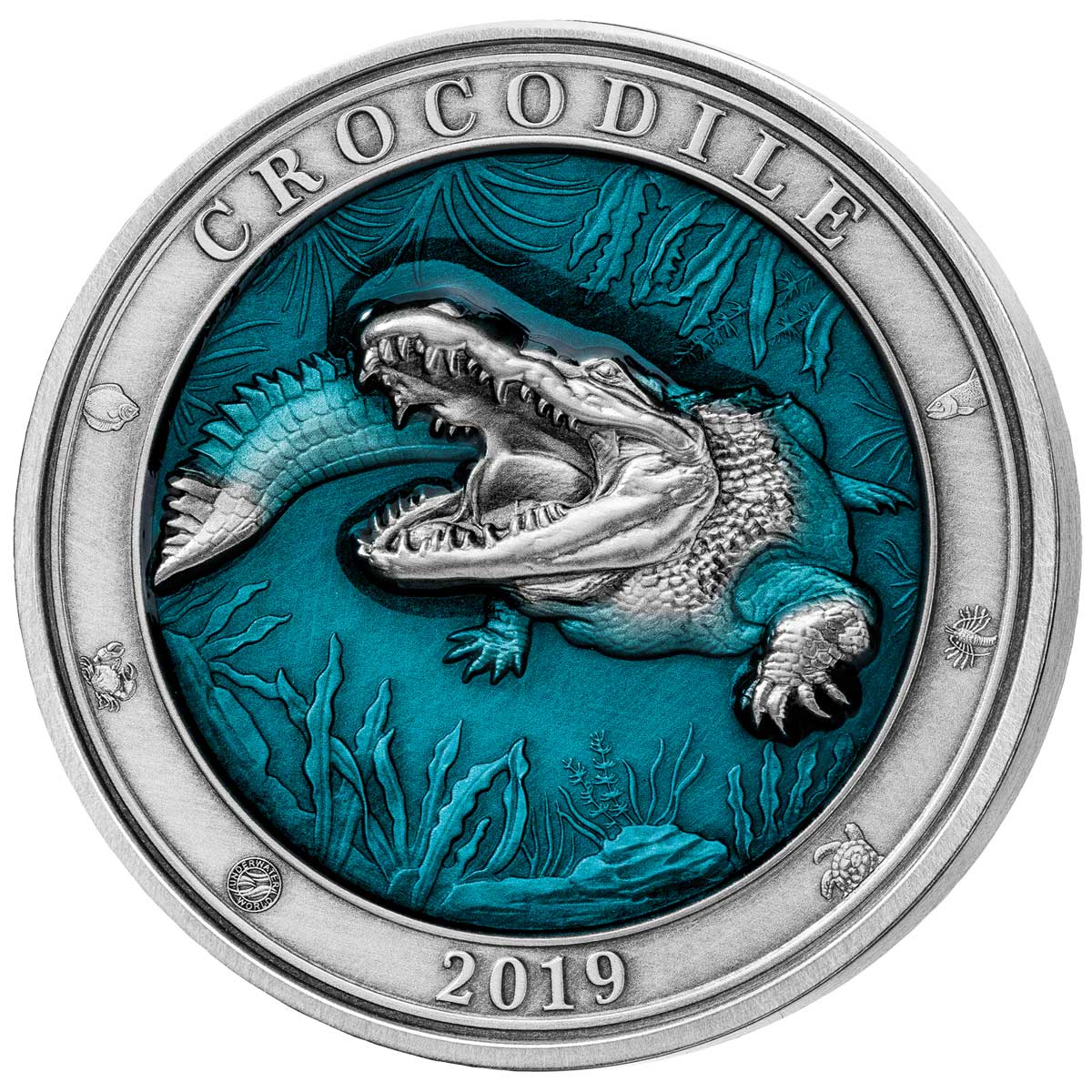
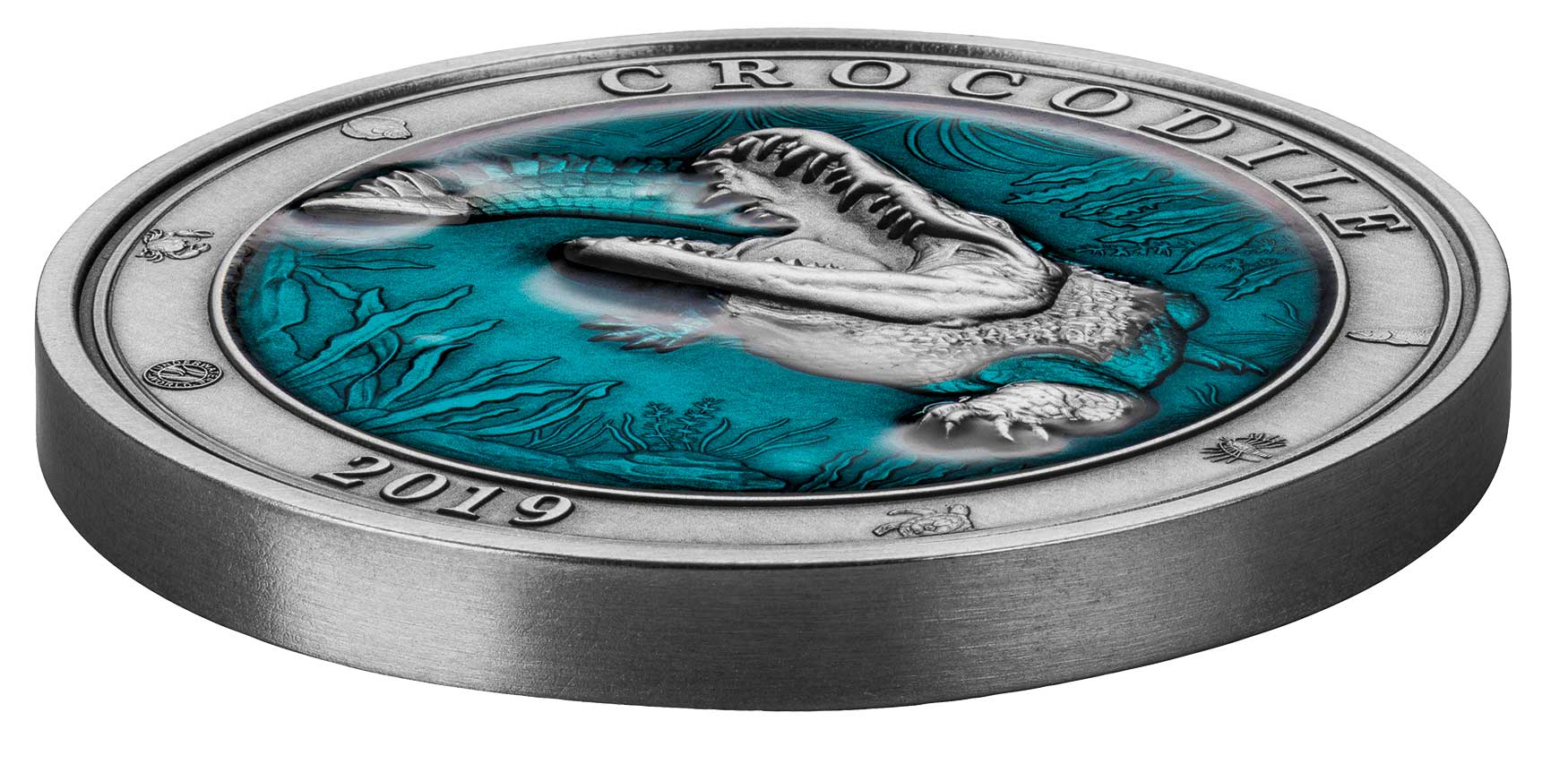

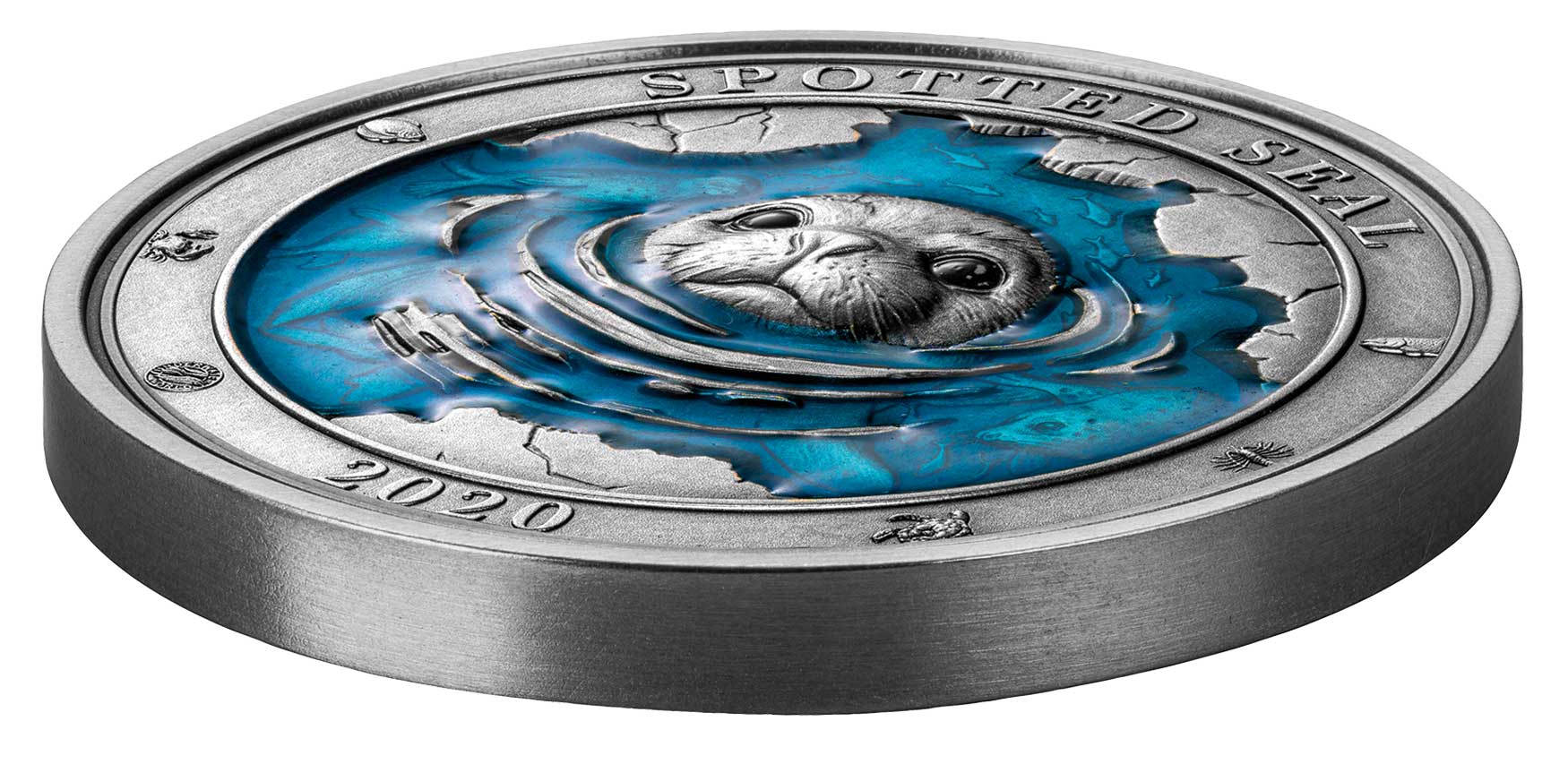
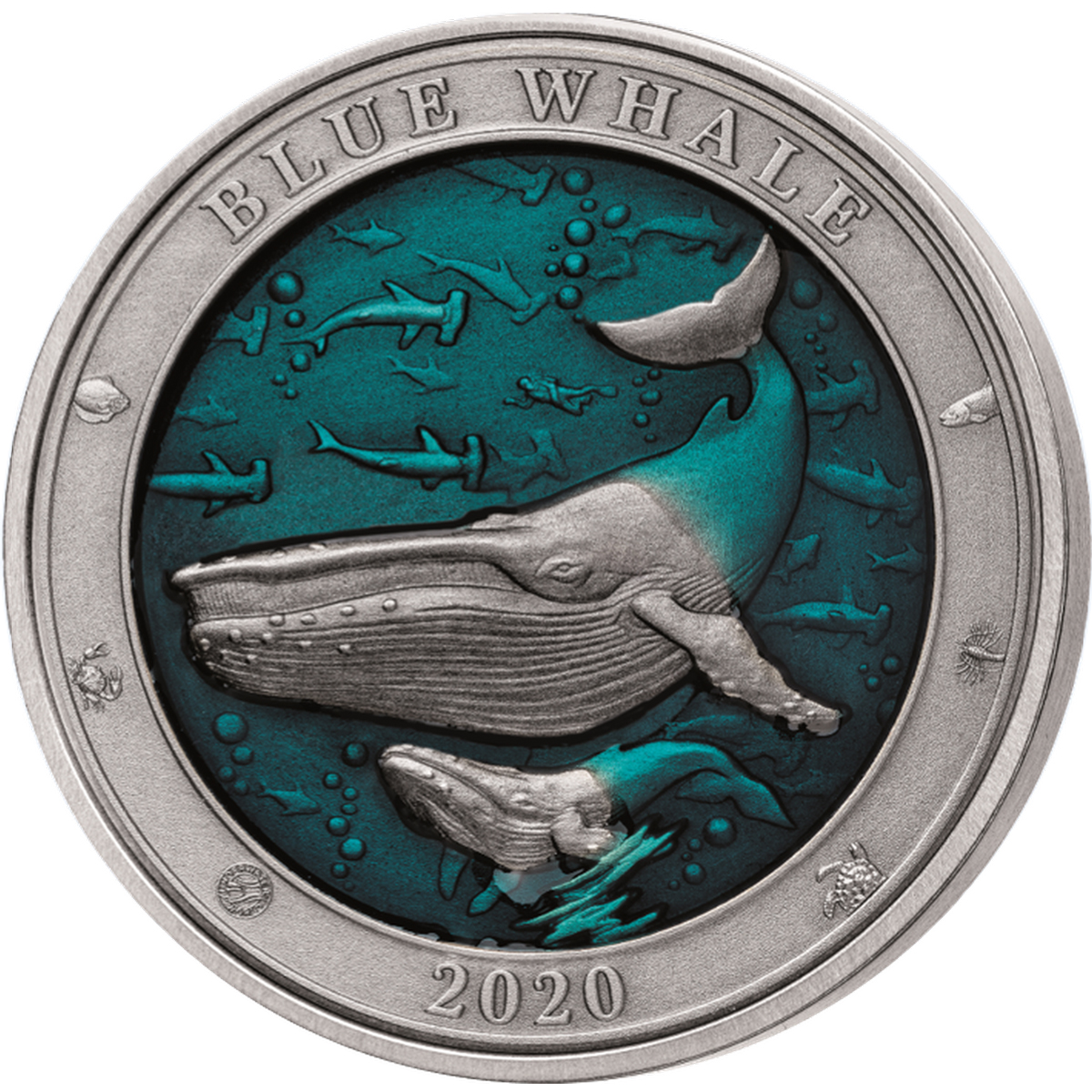
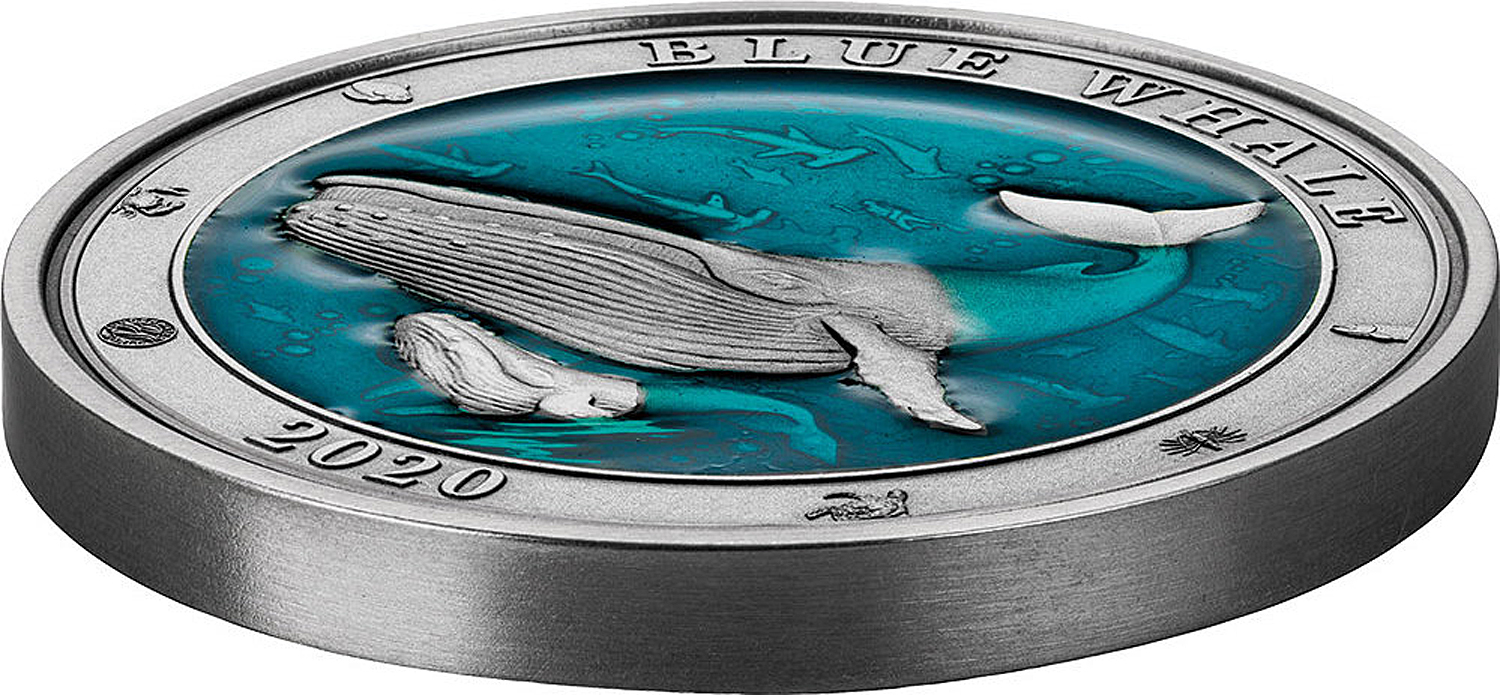
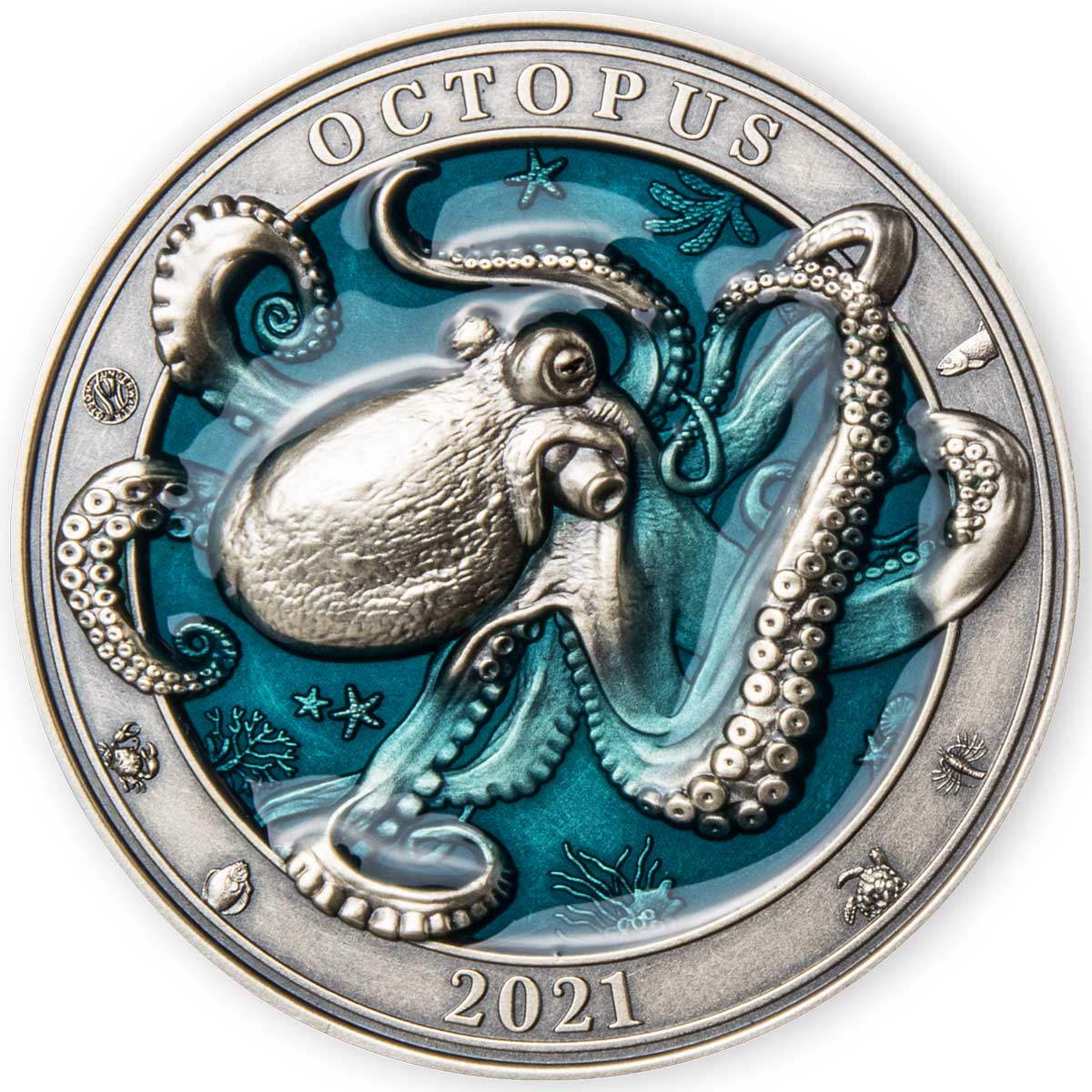

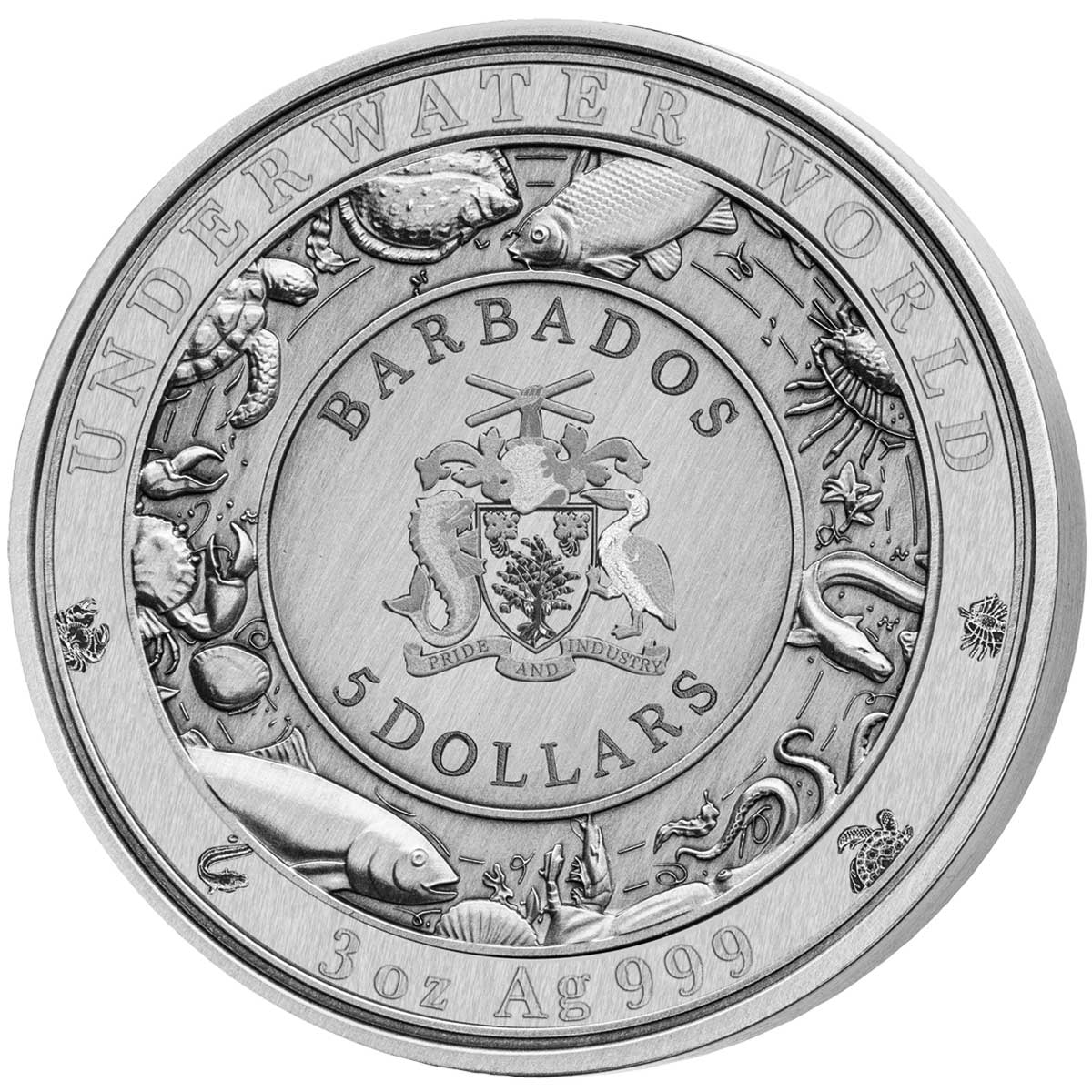
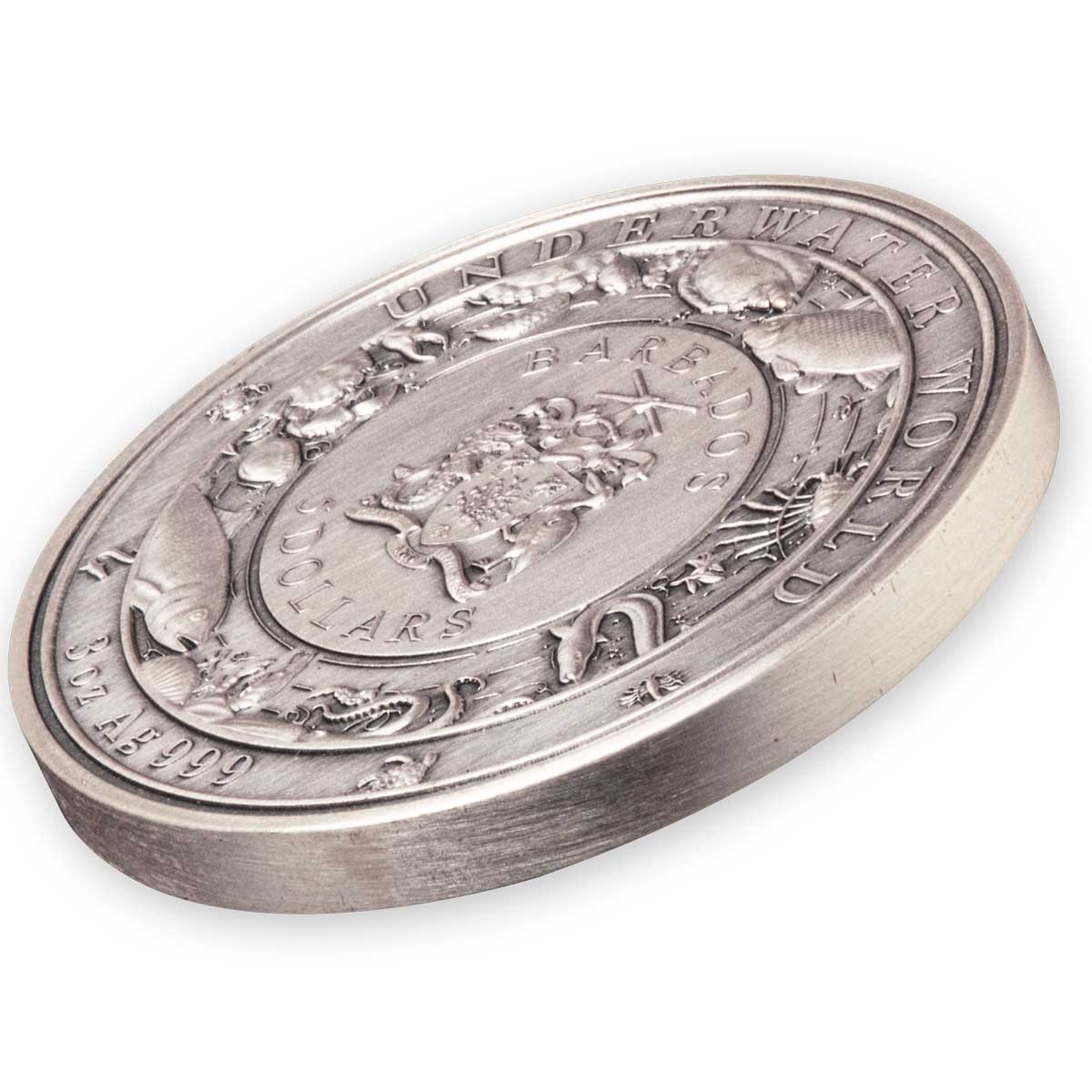

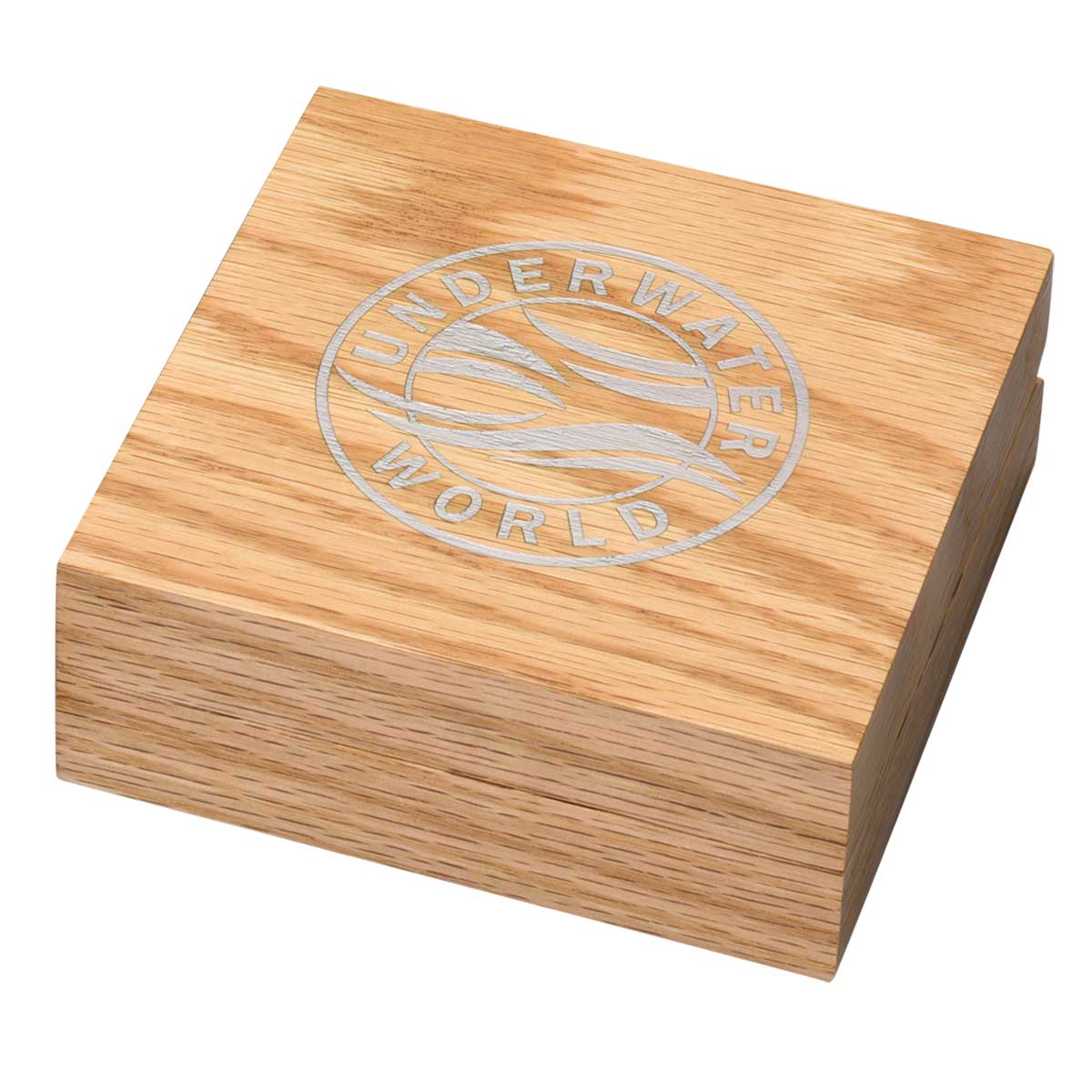
Leave A Comment